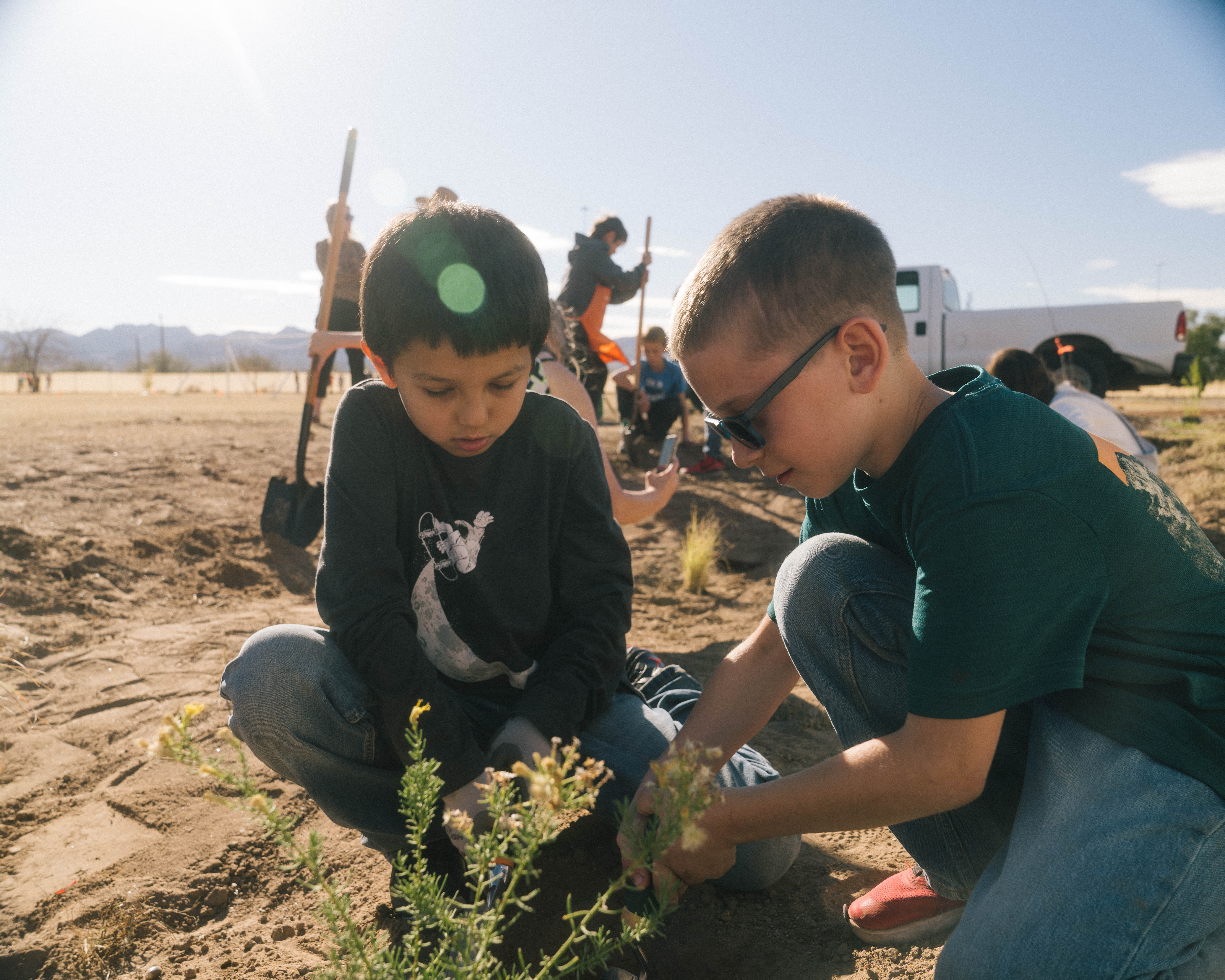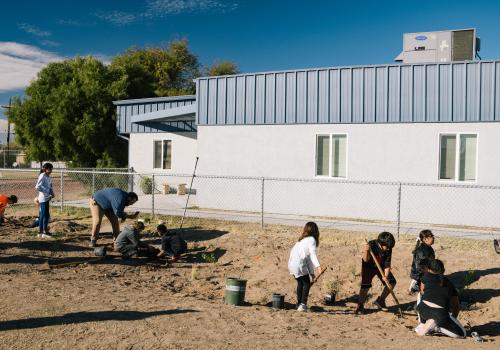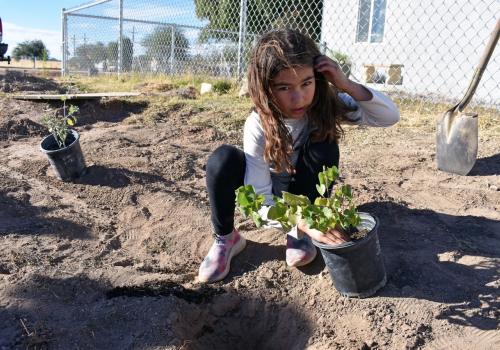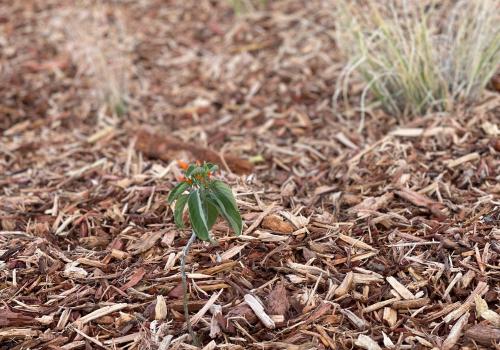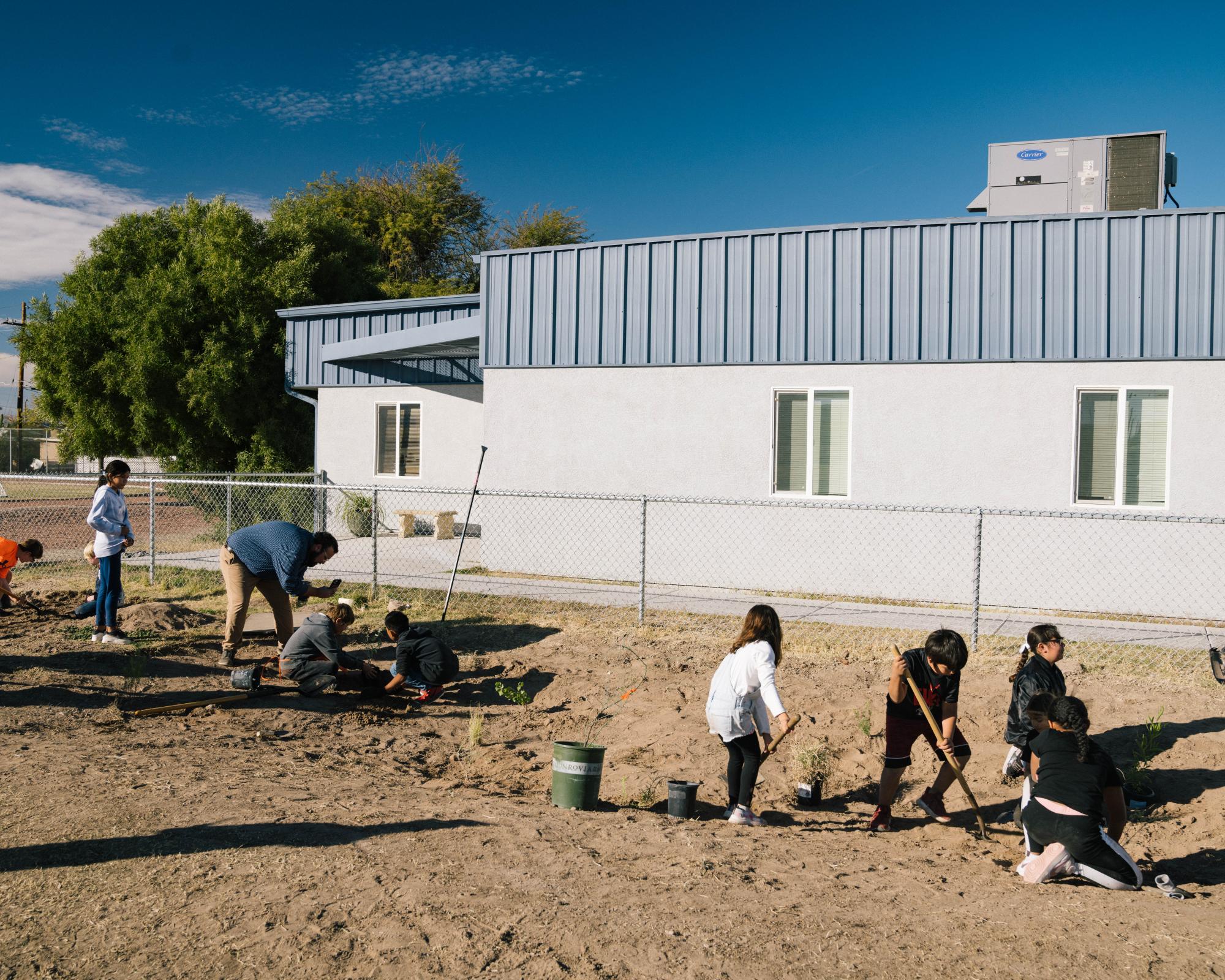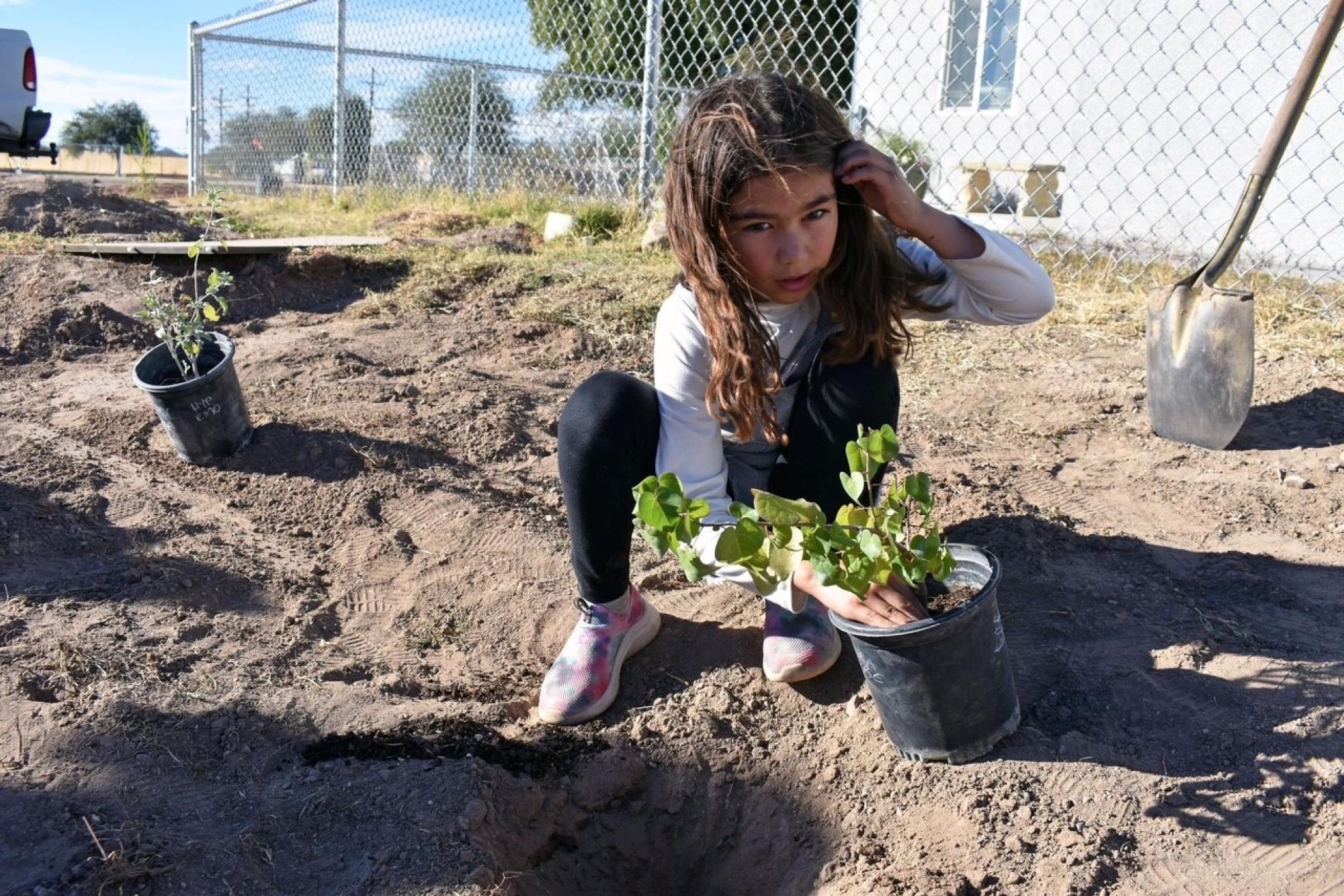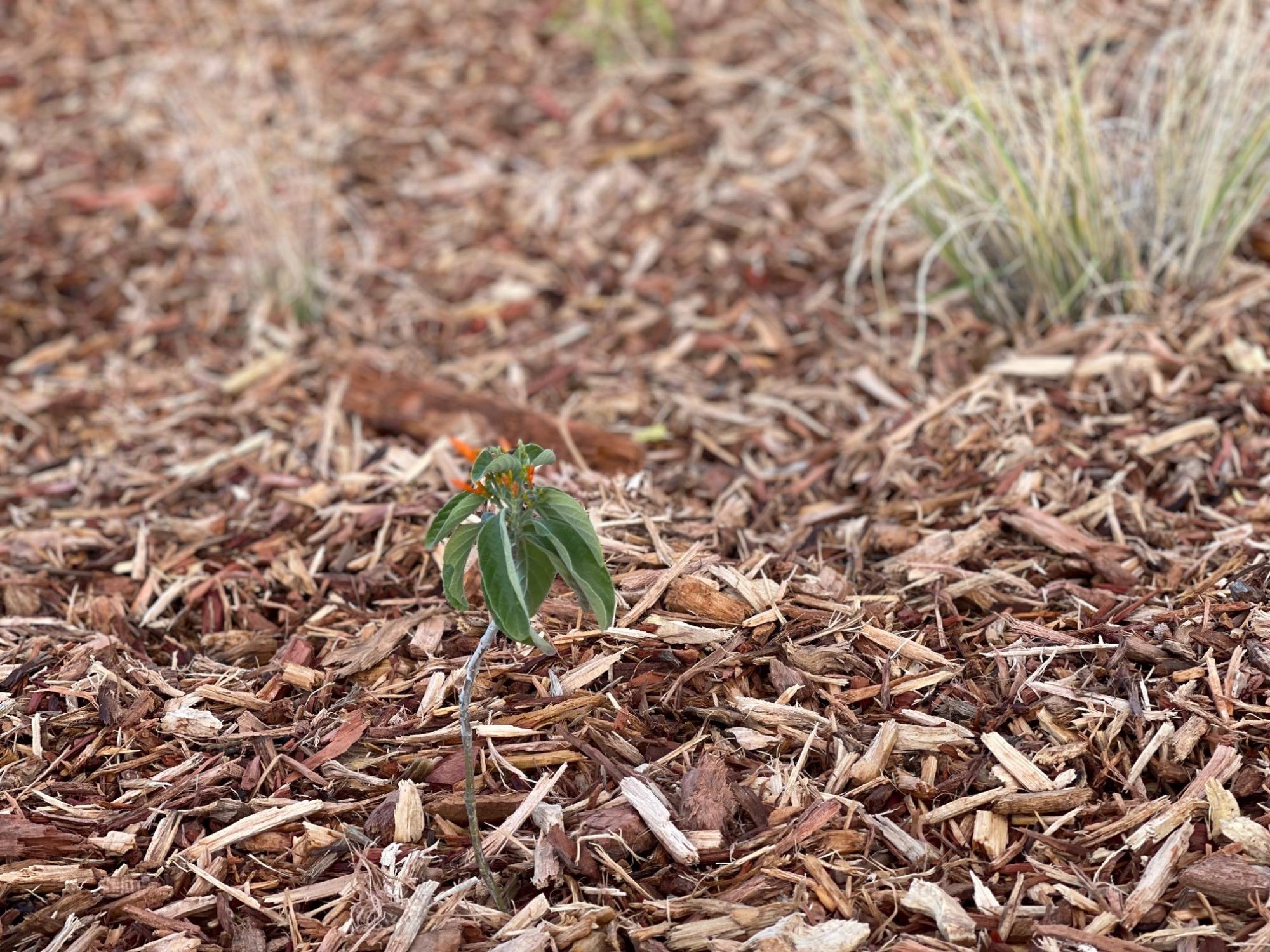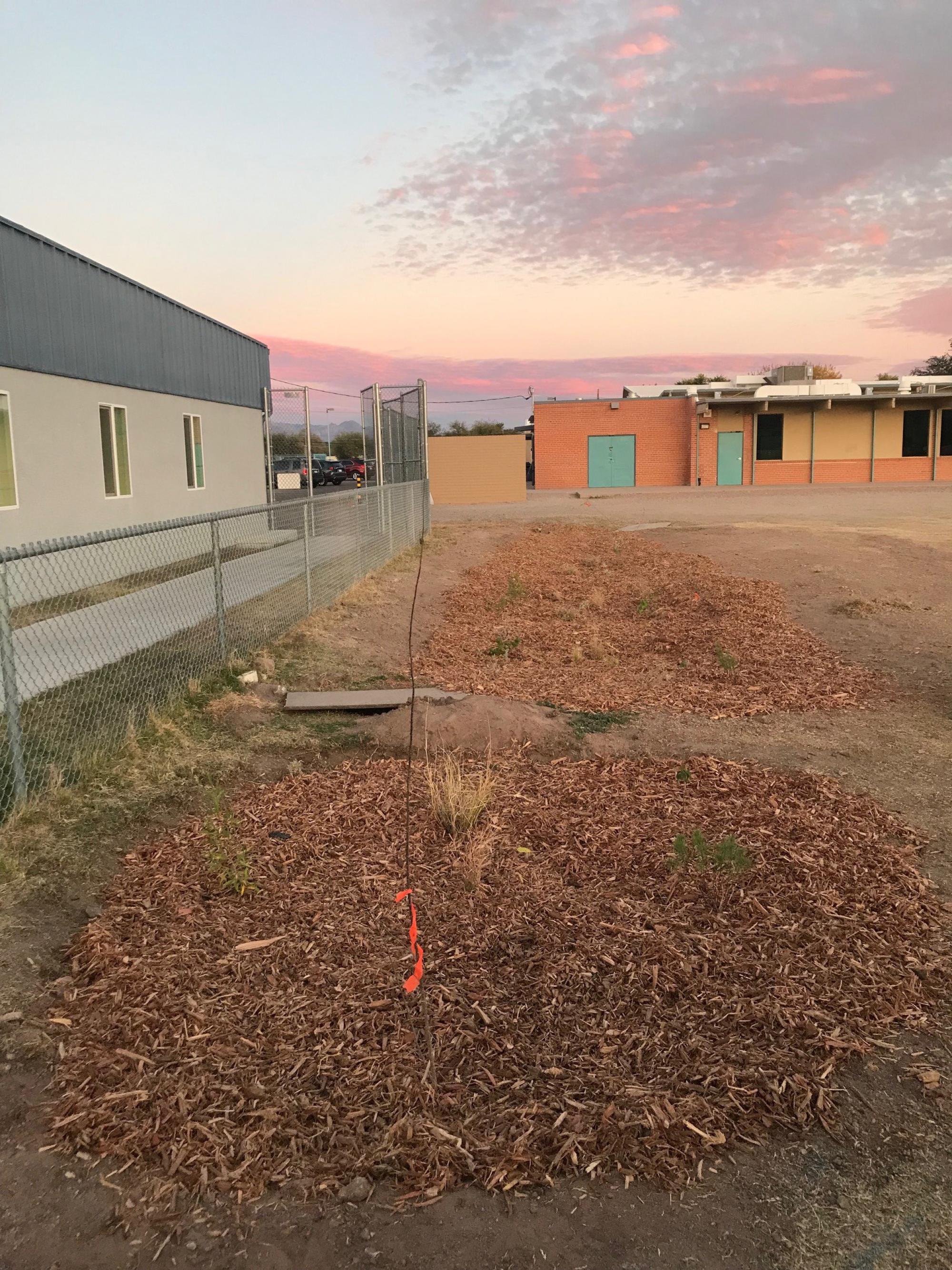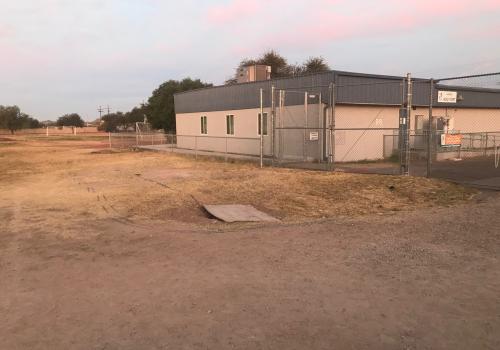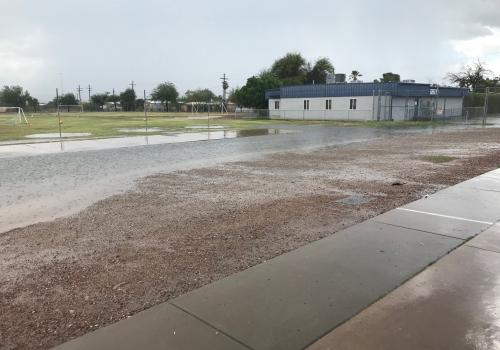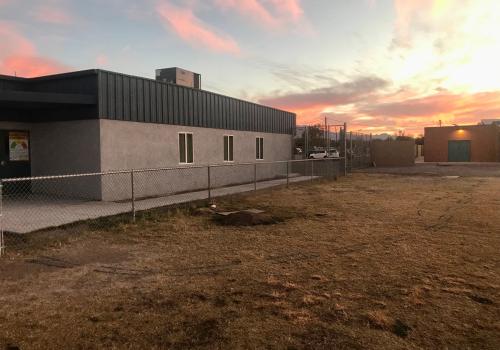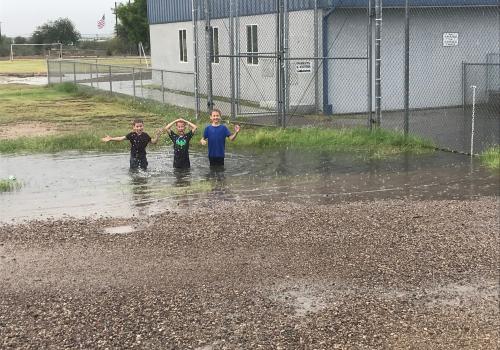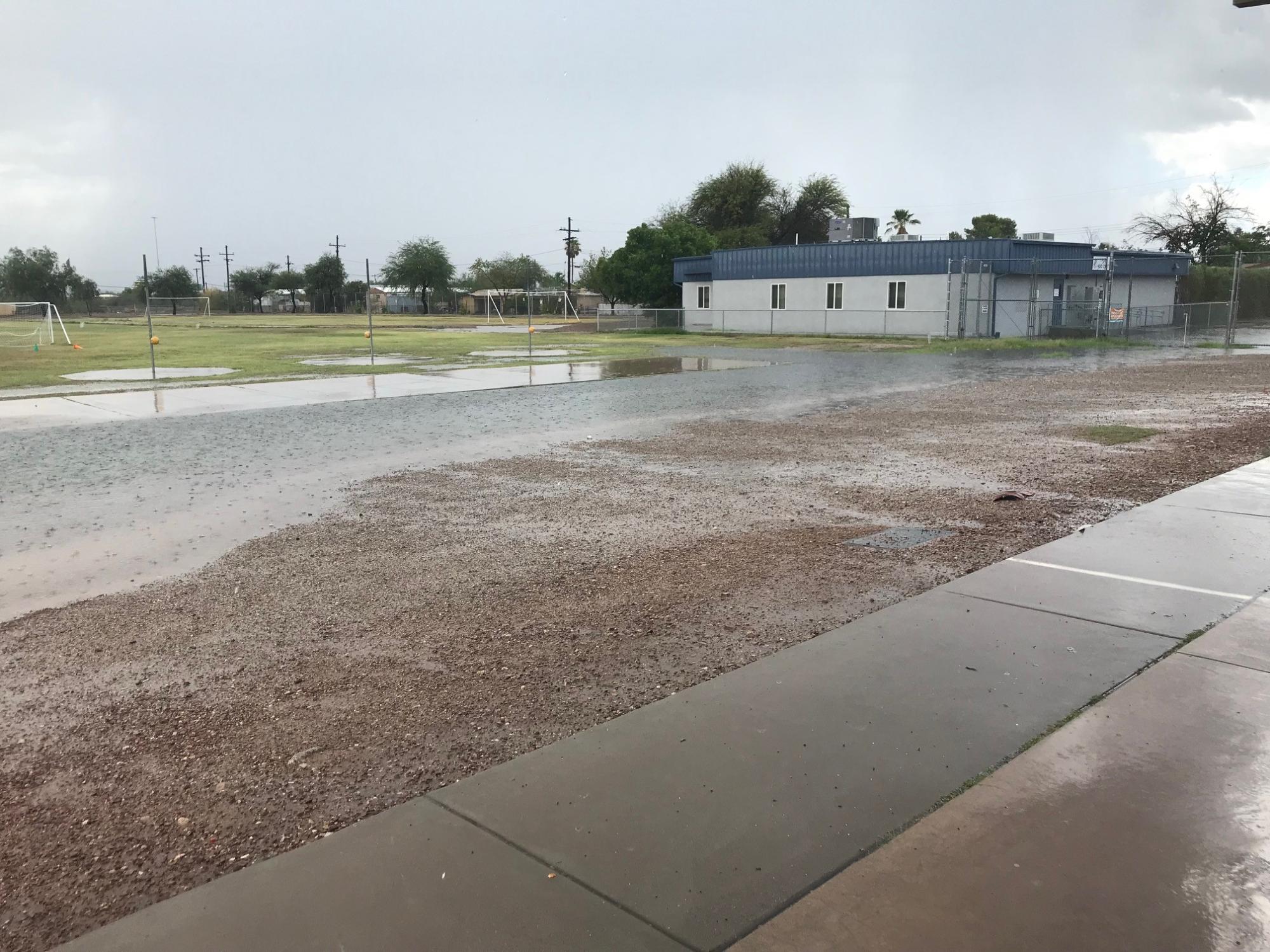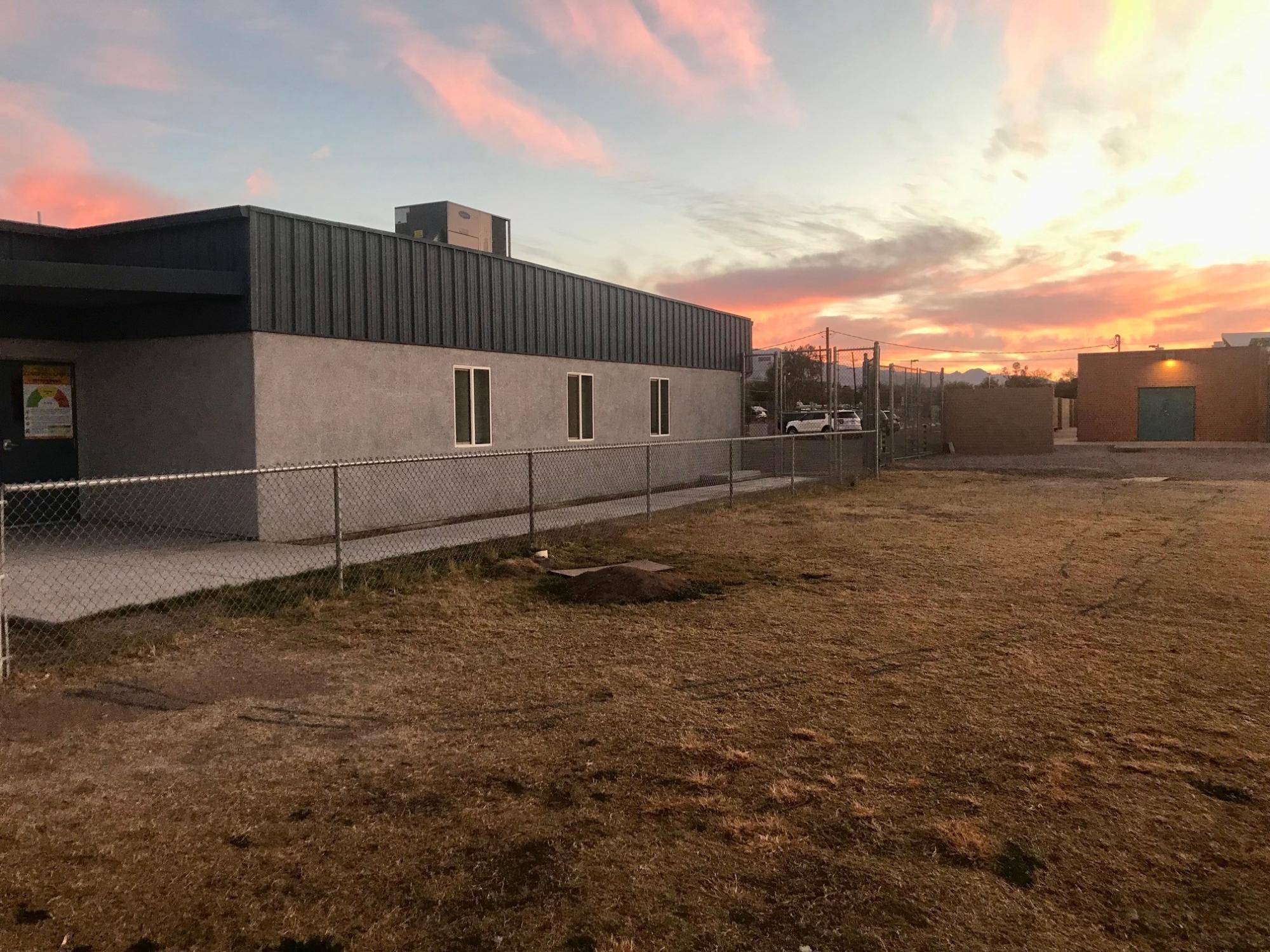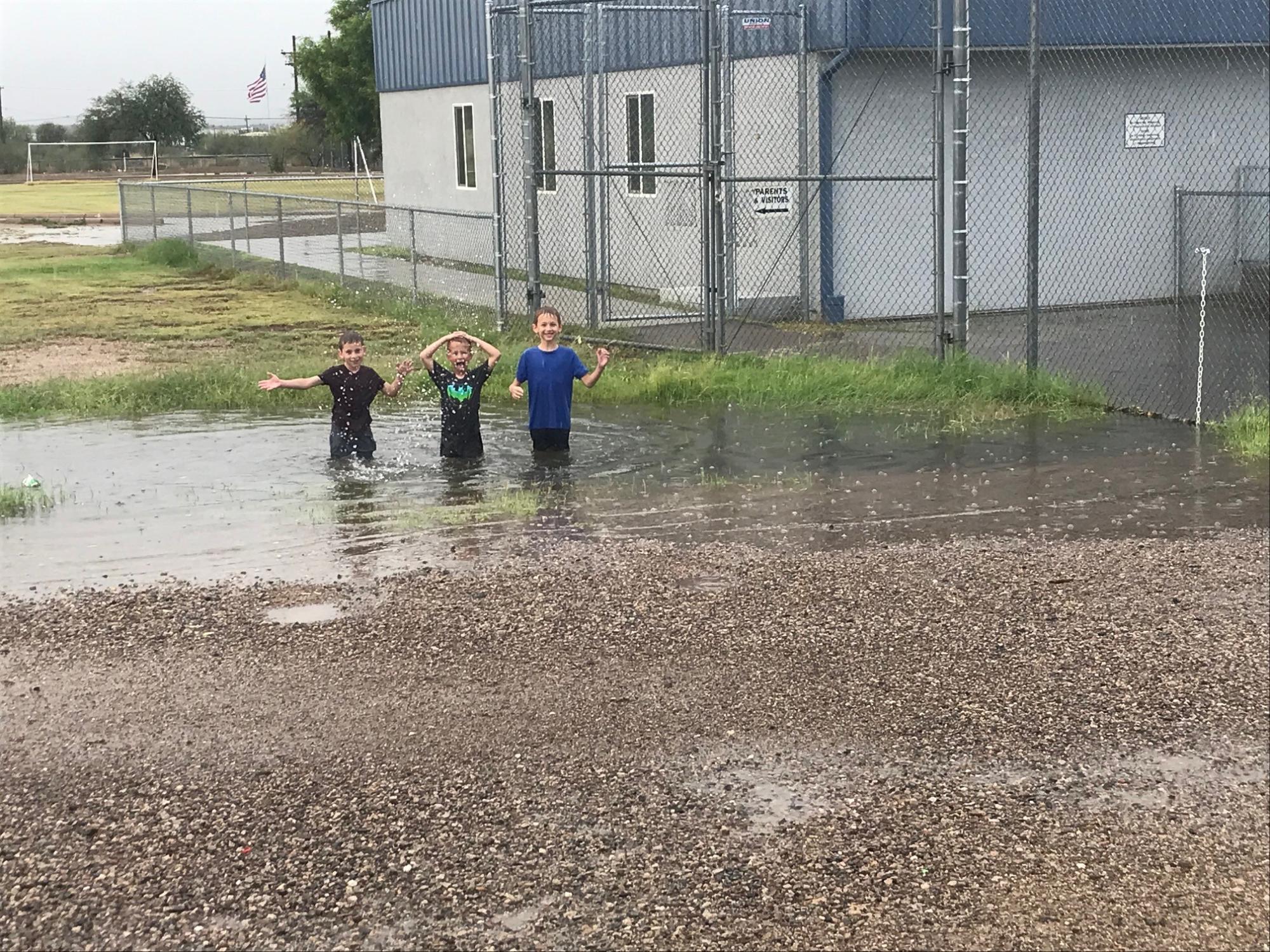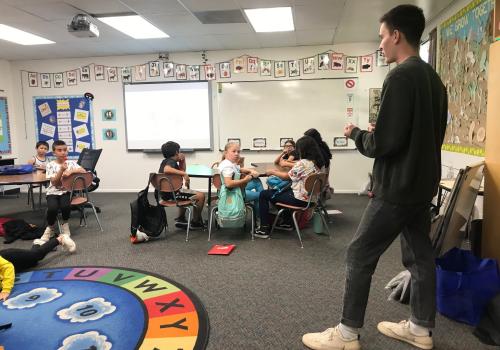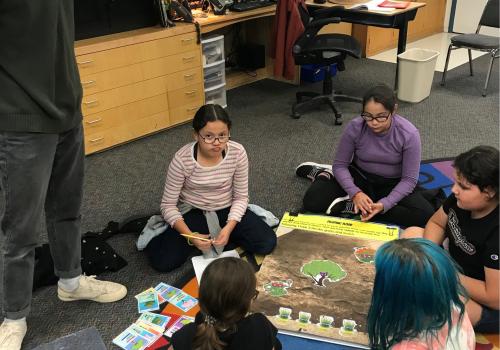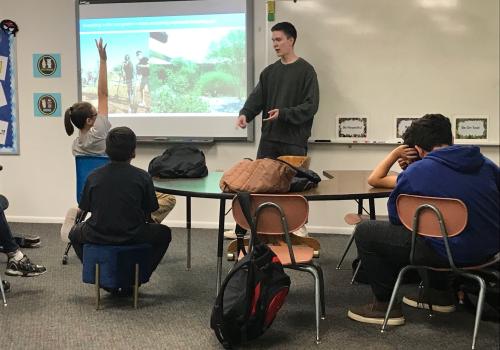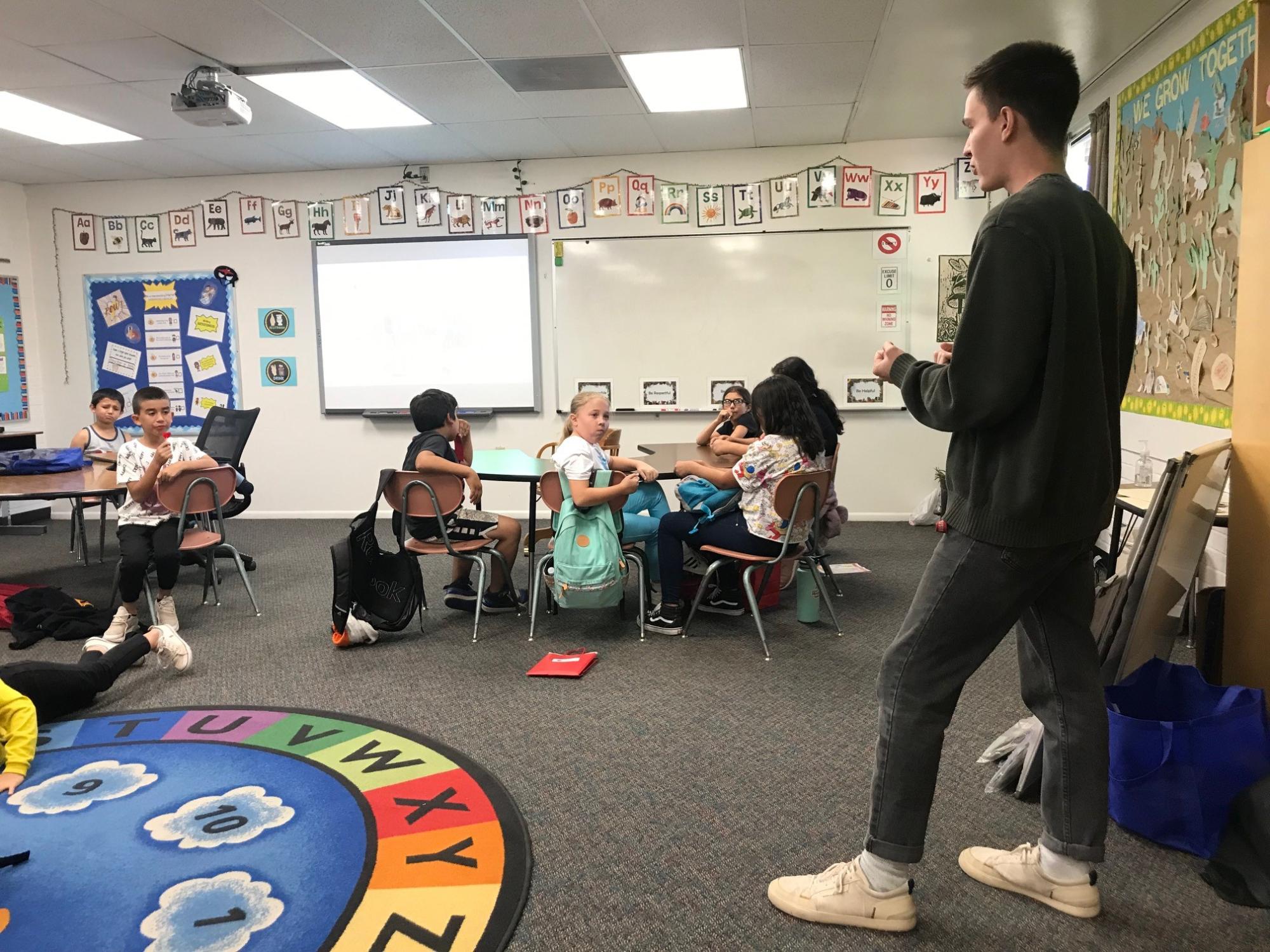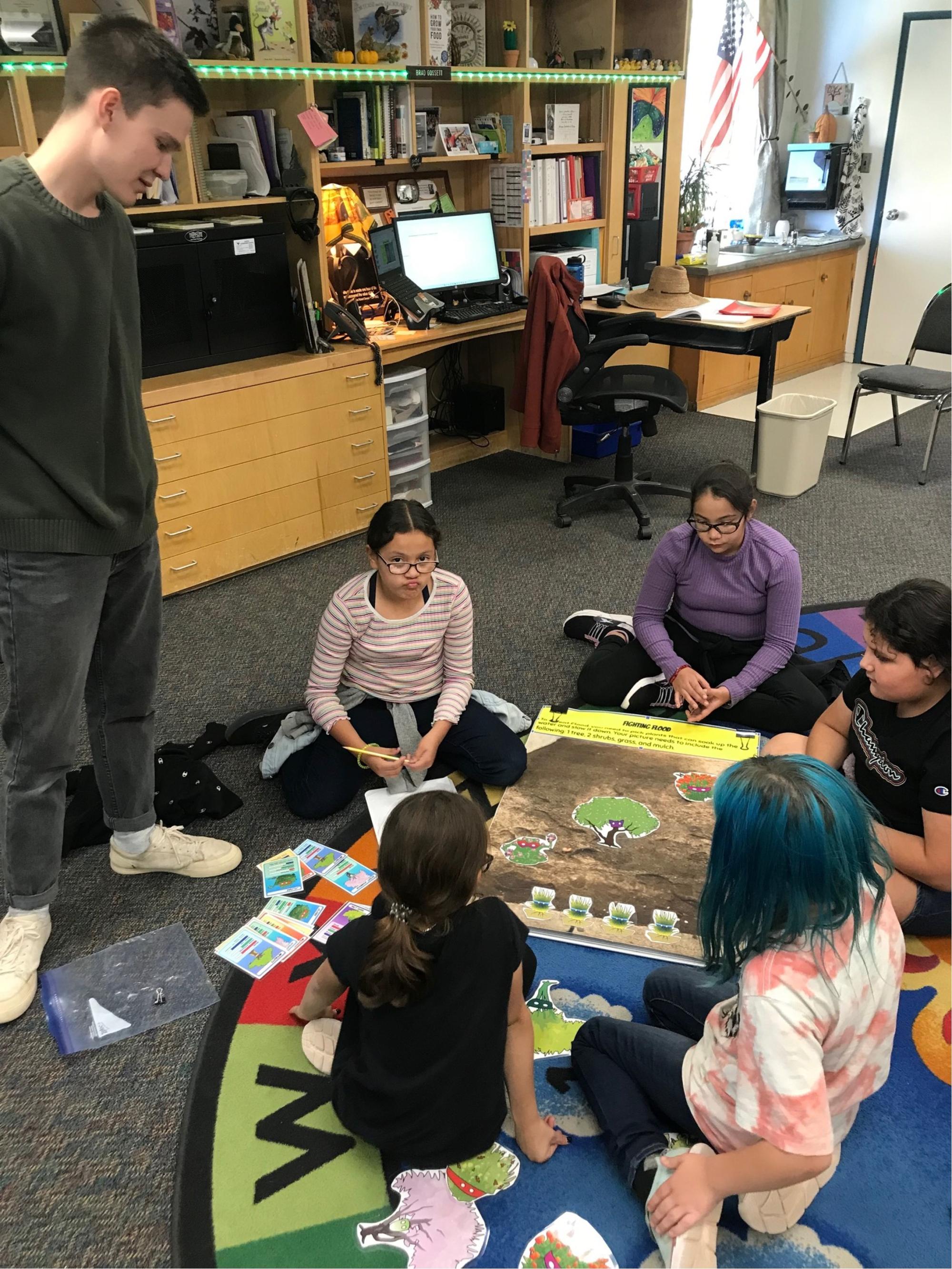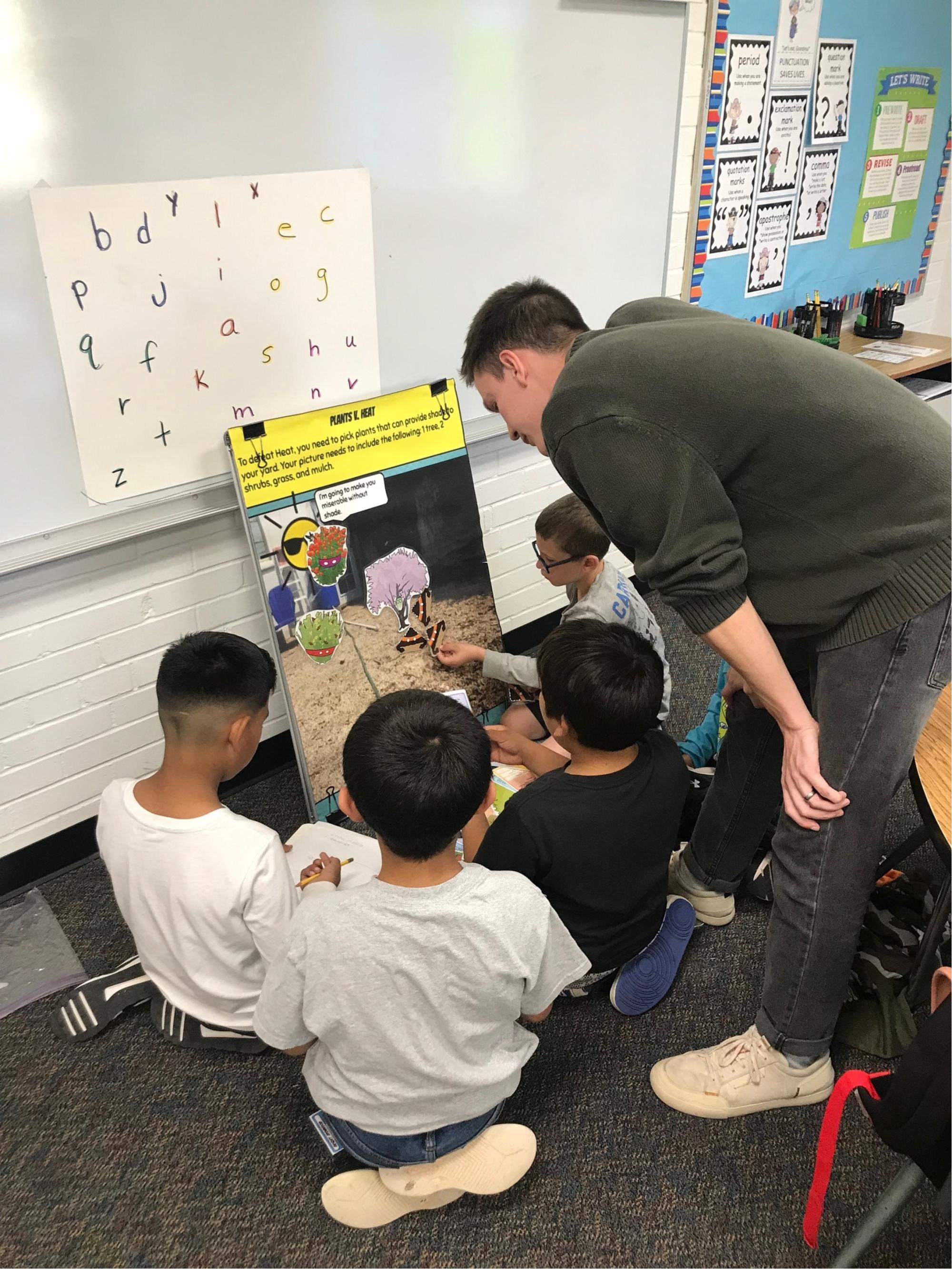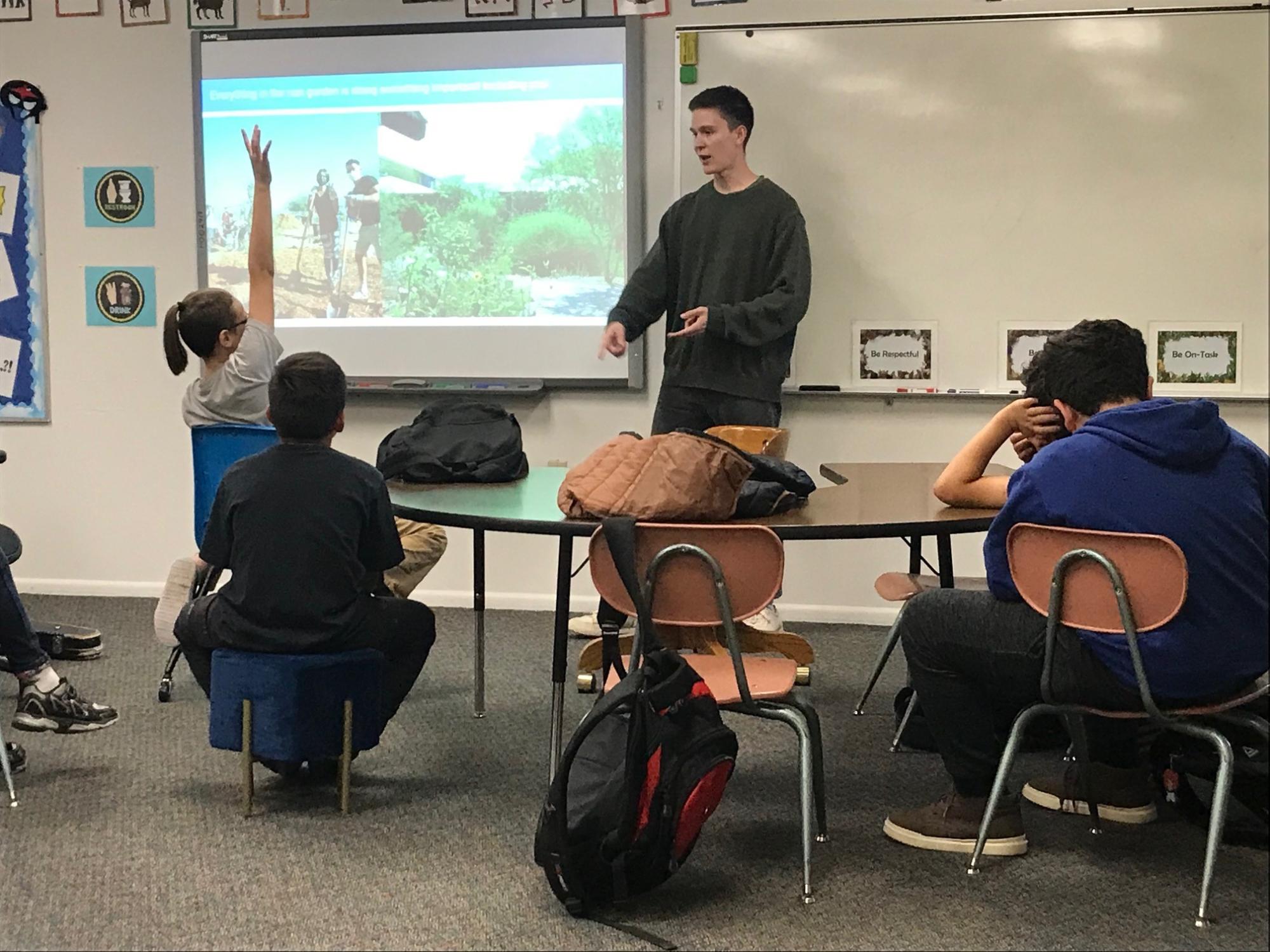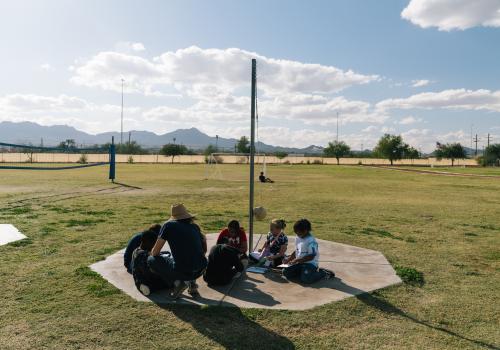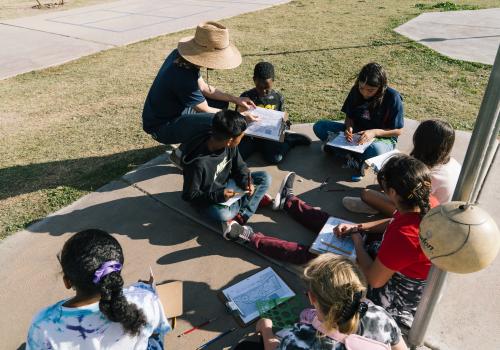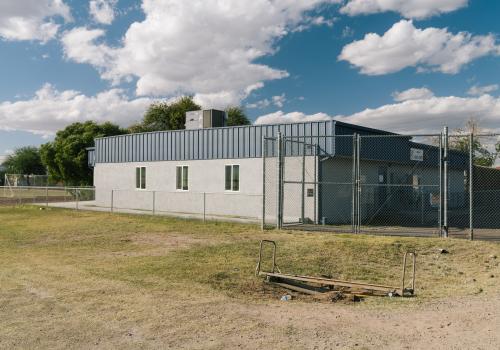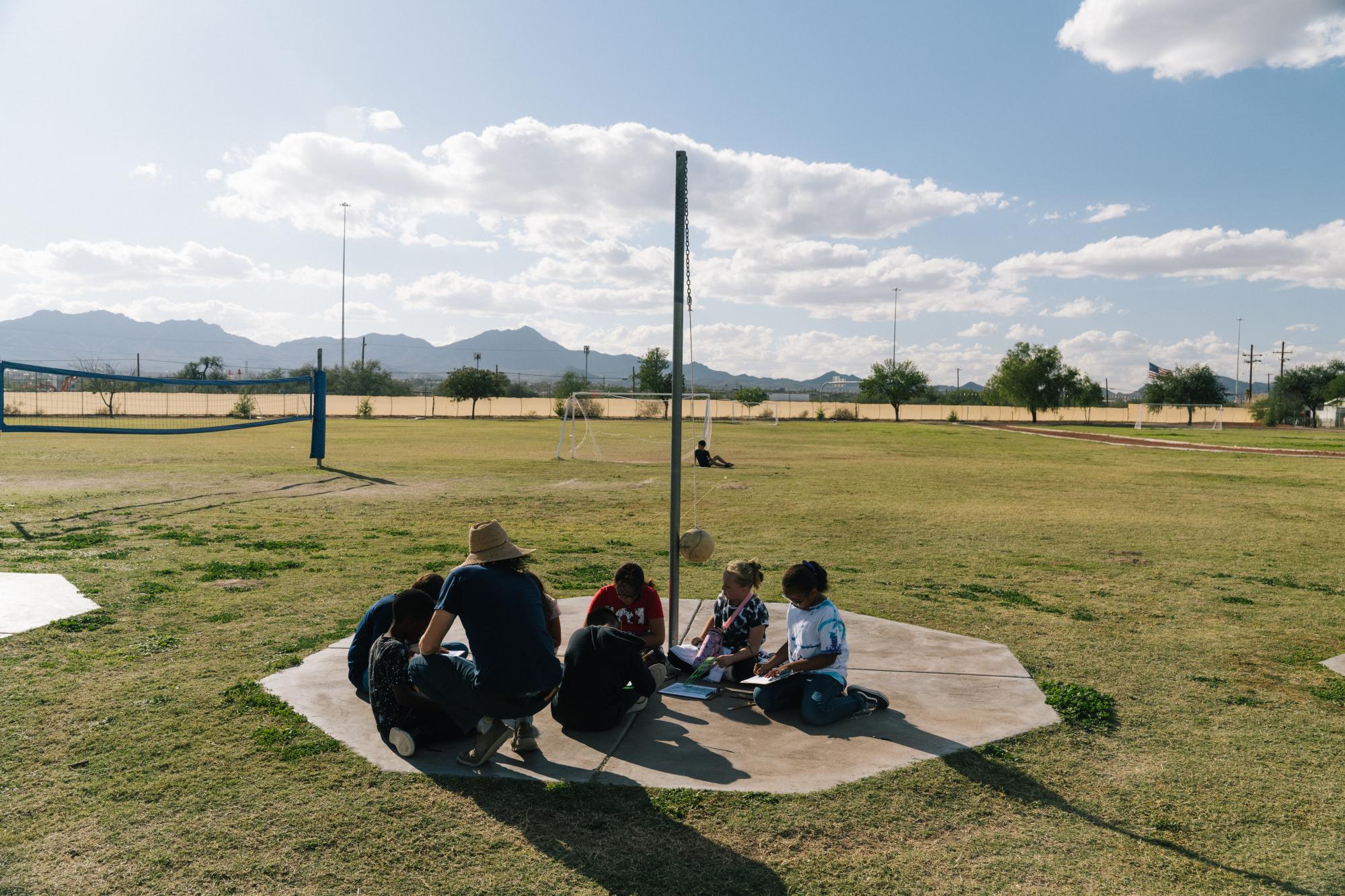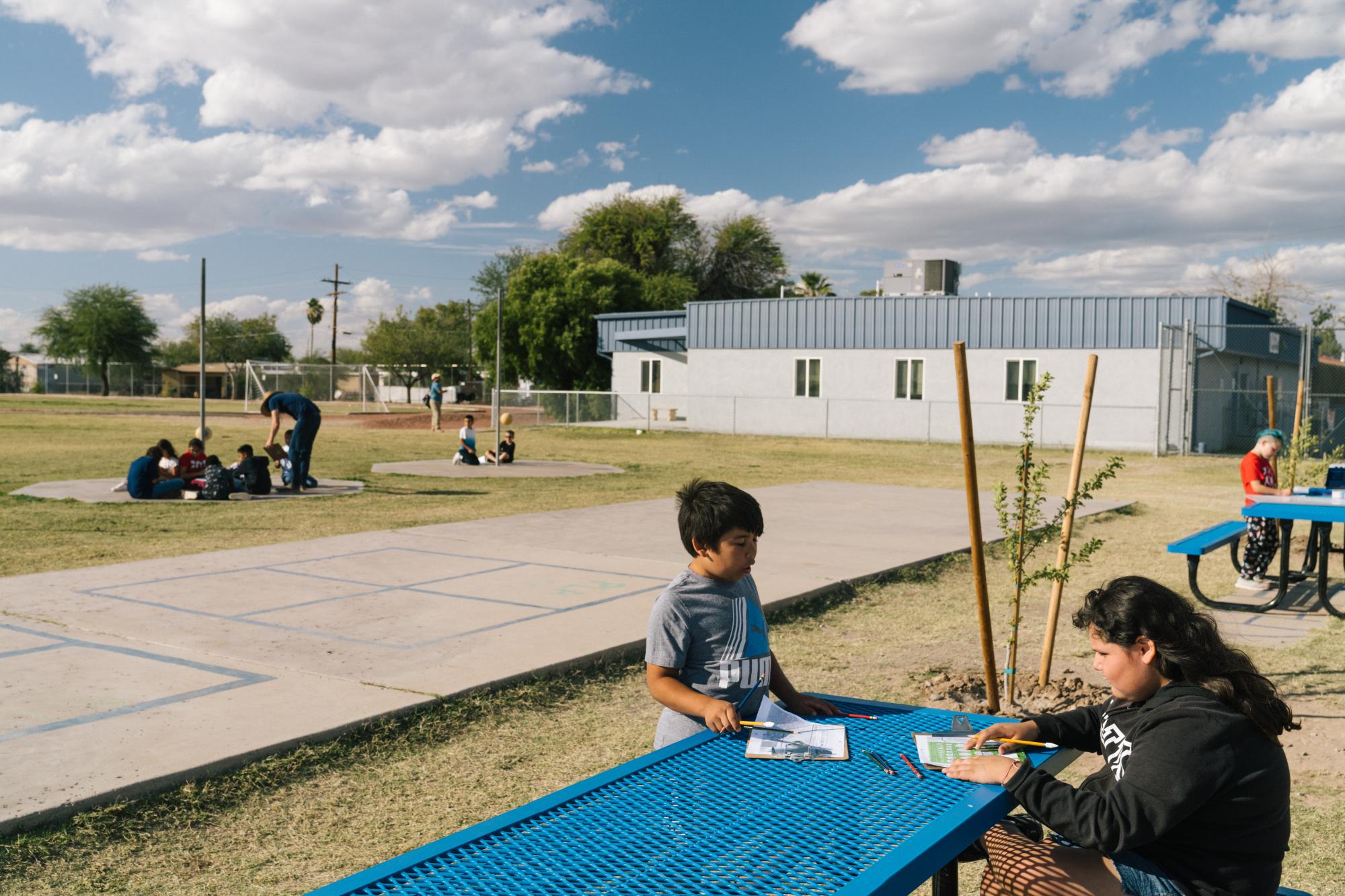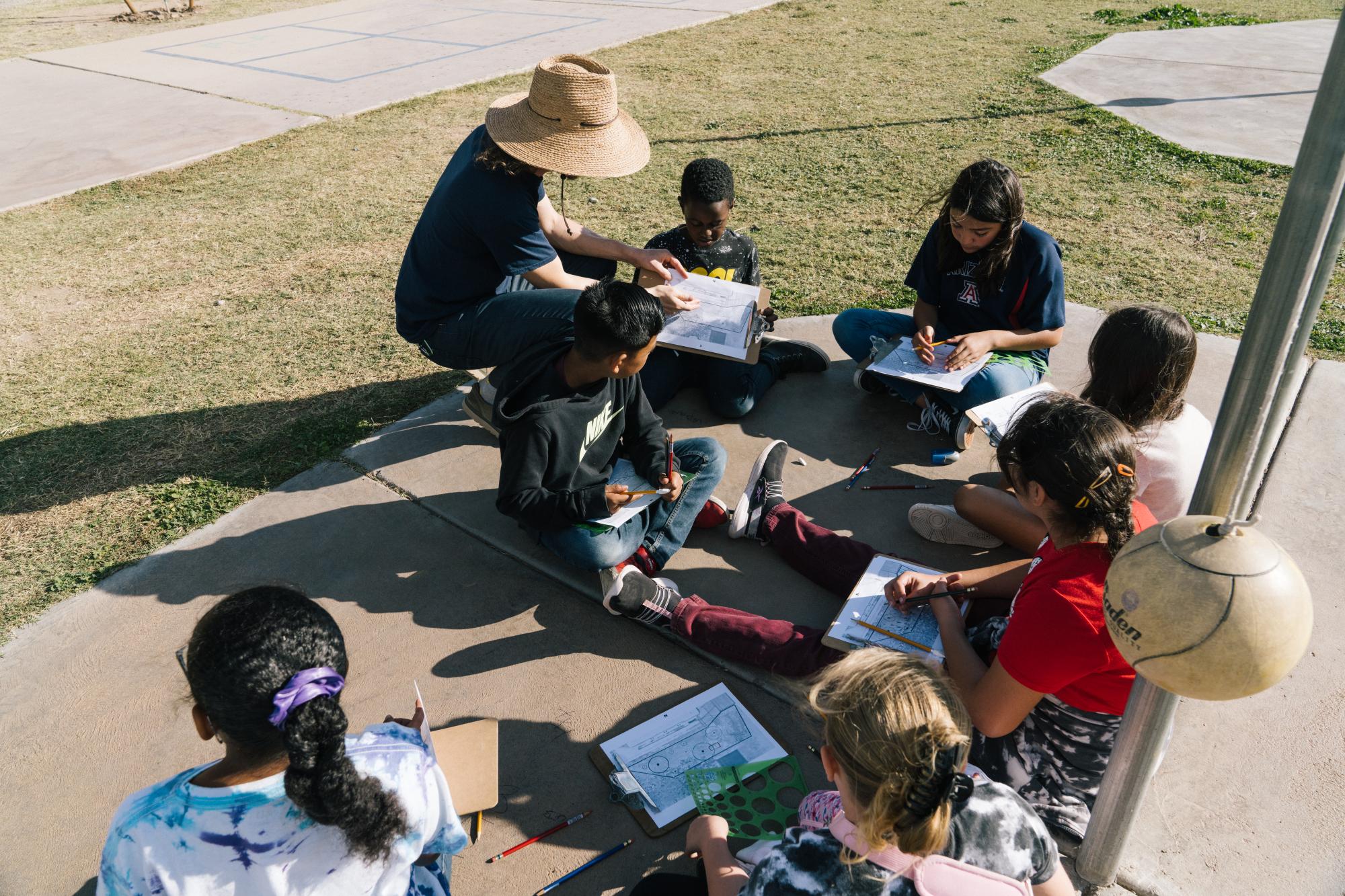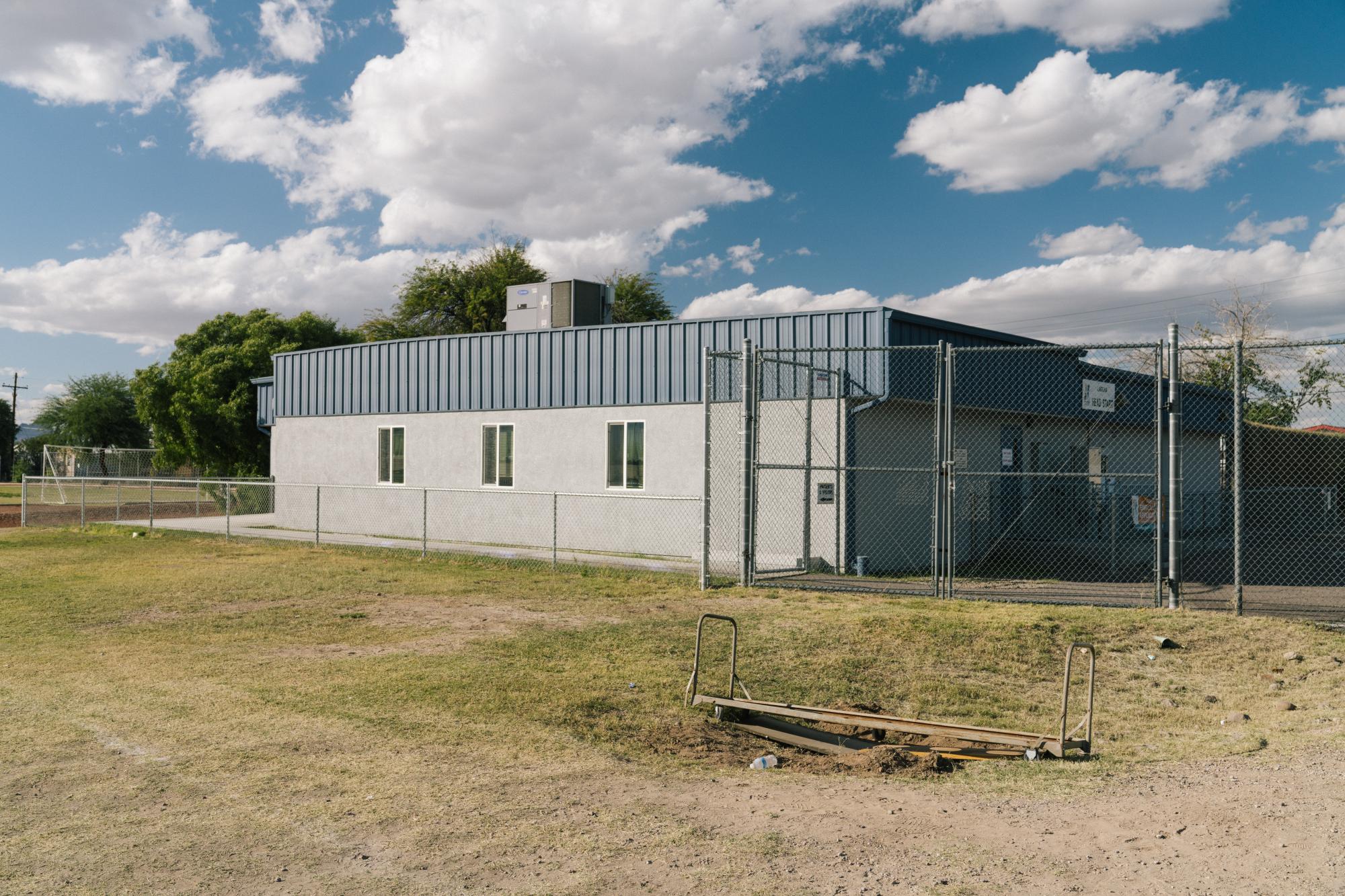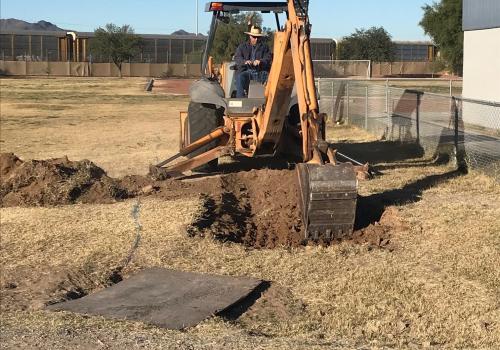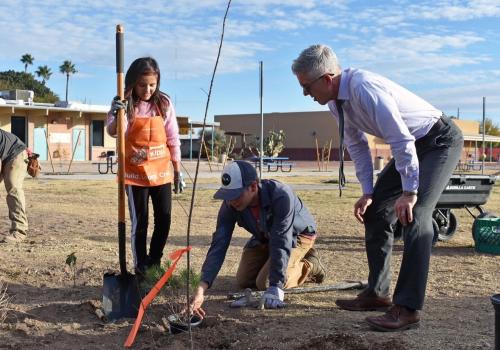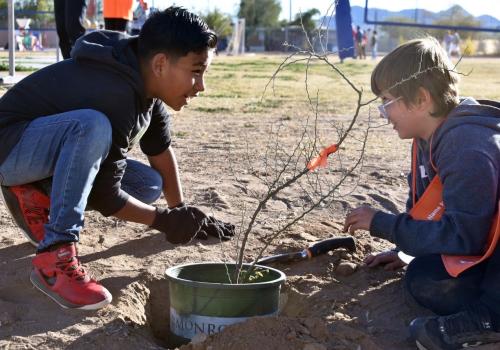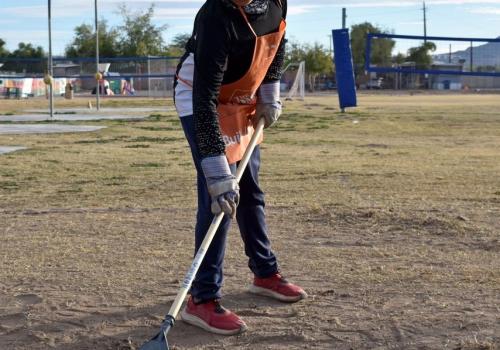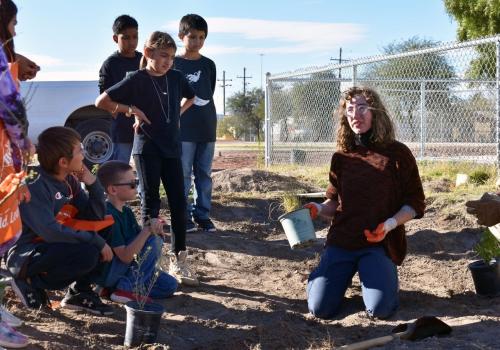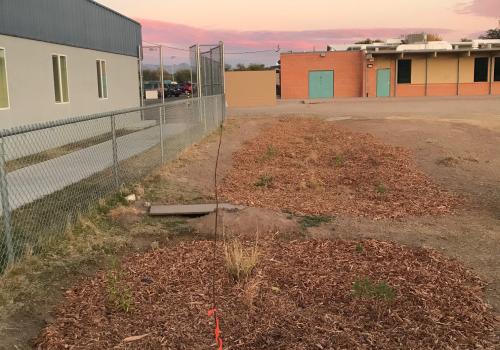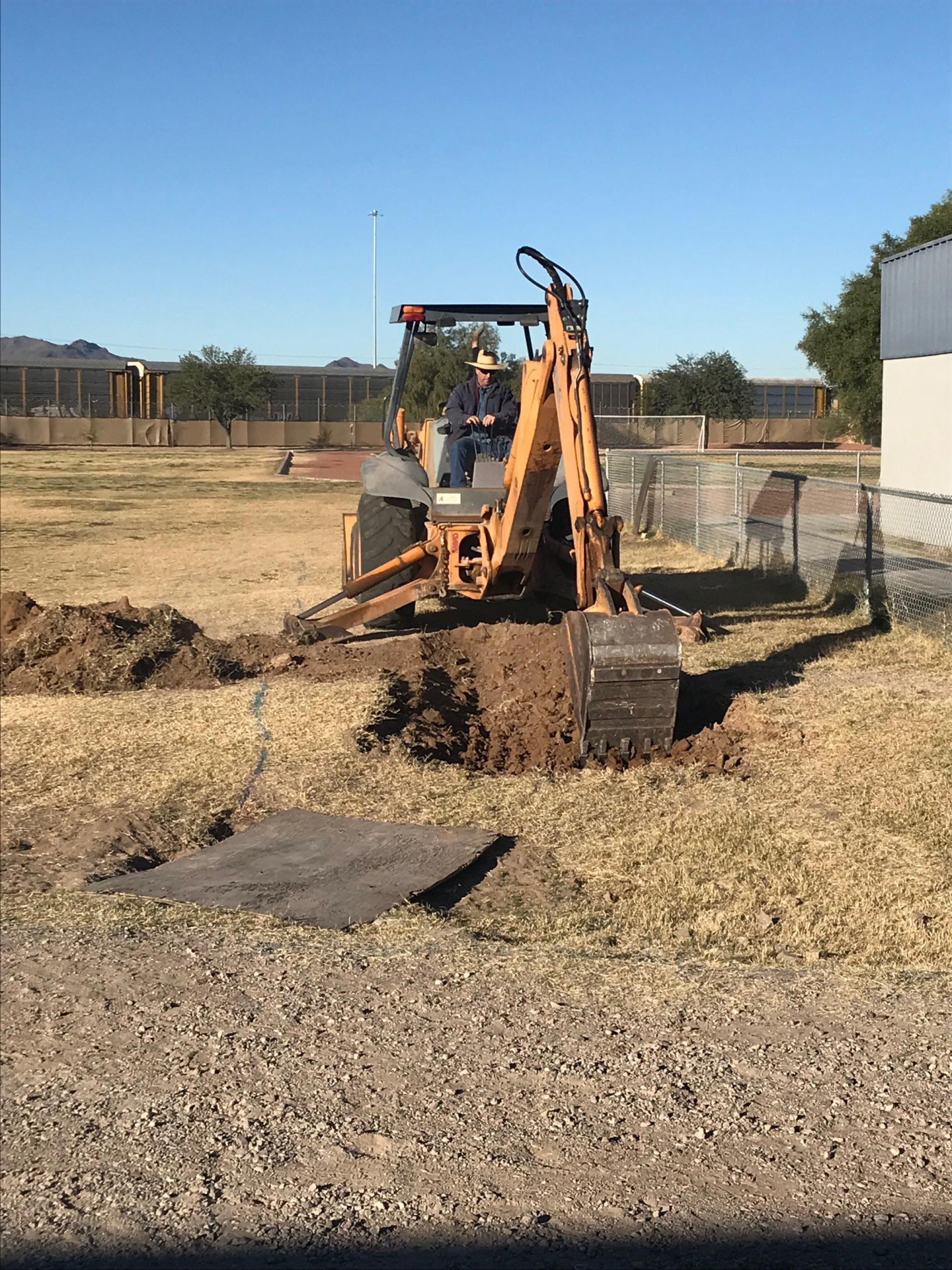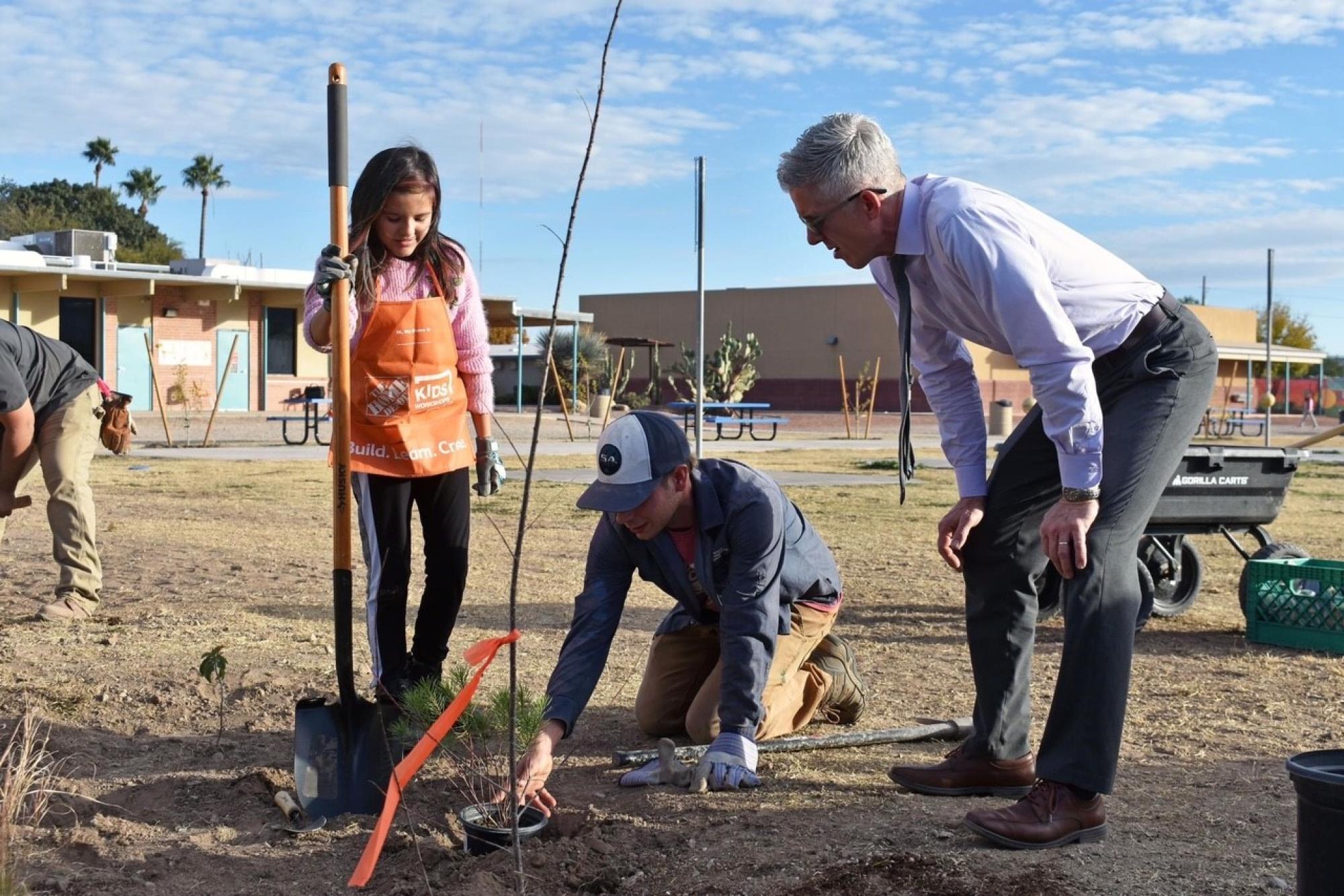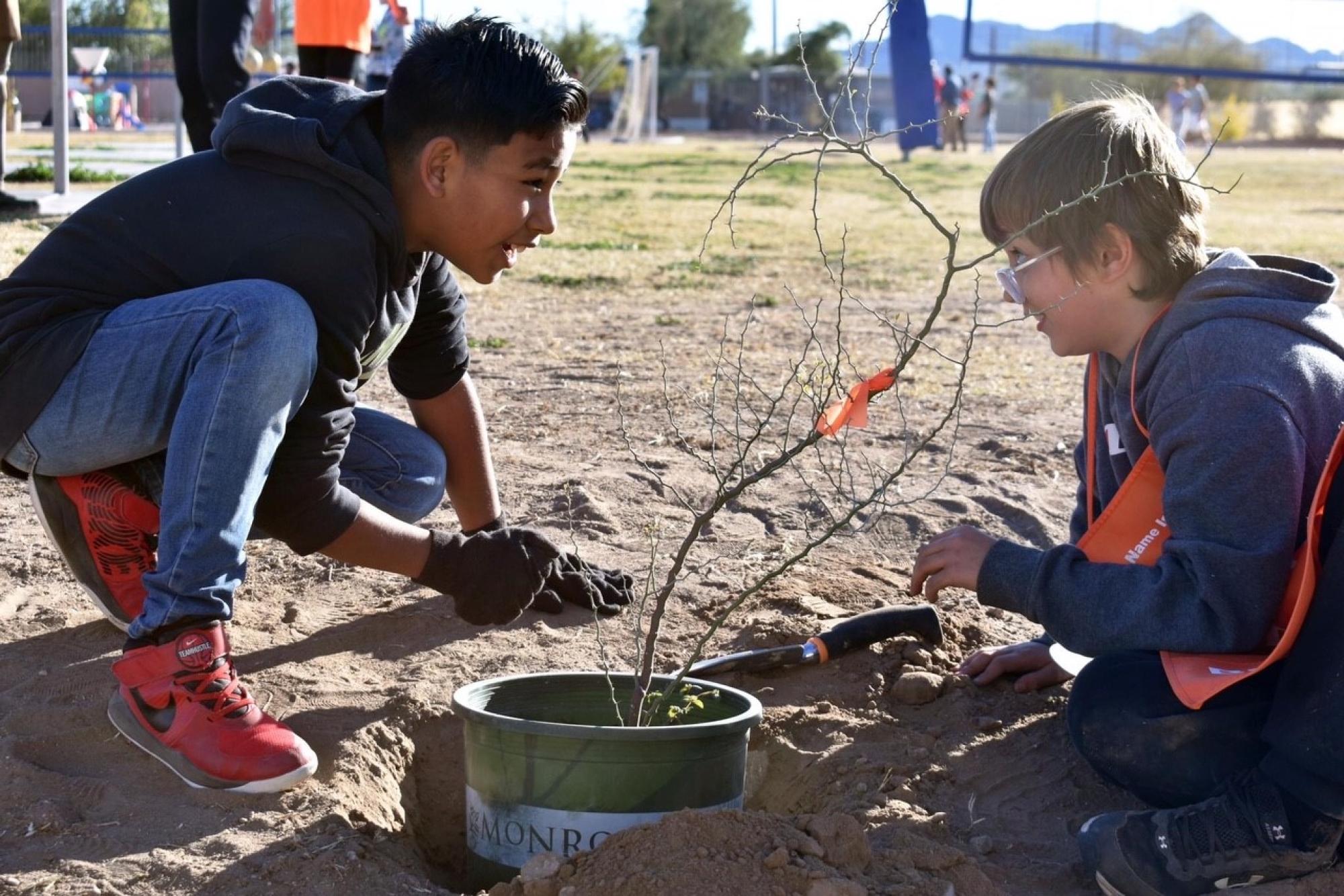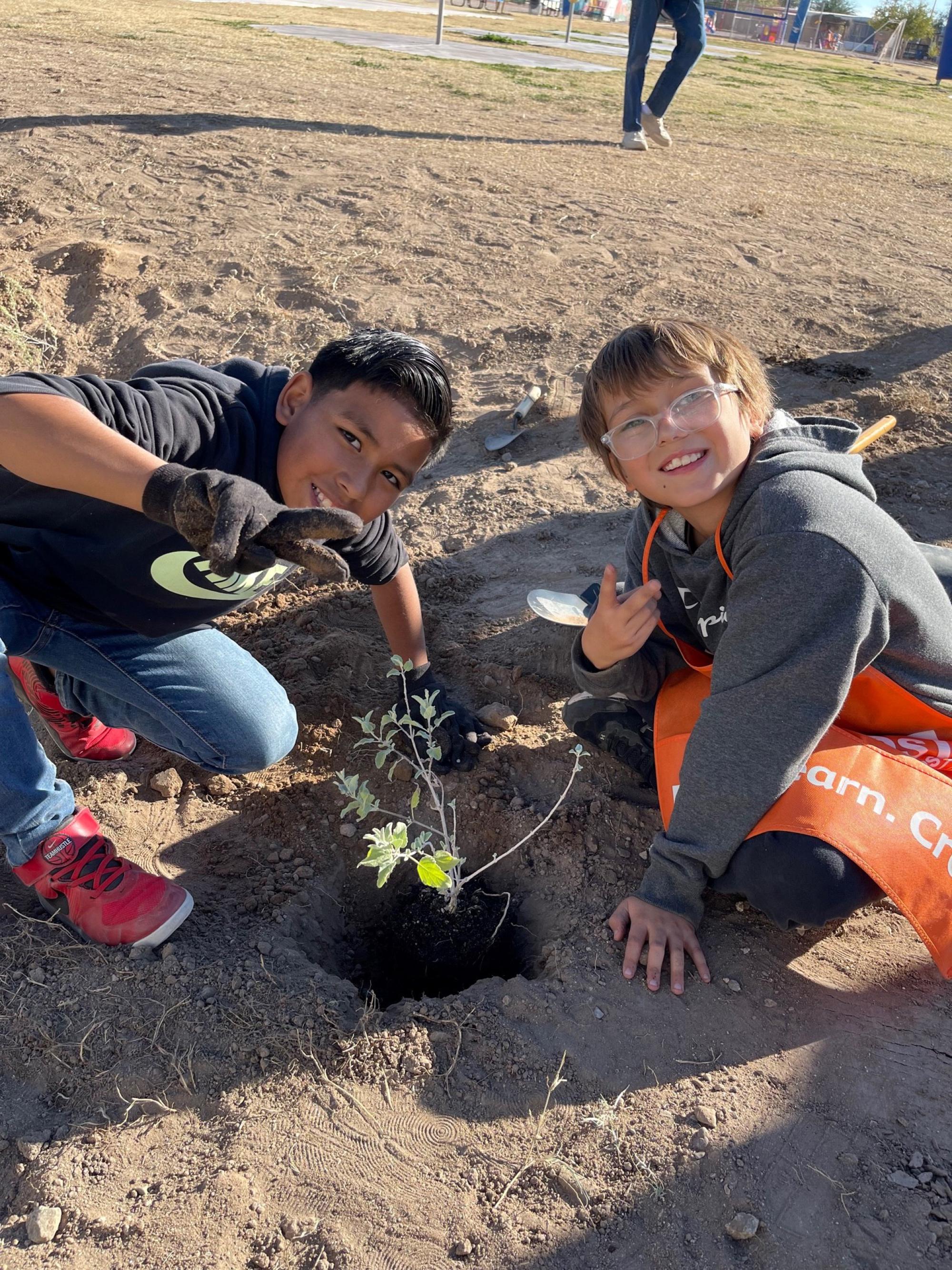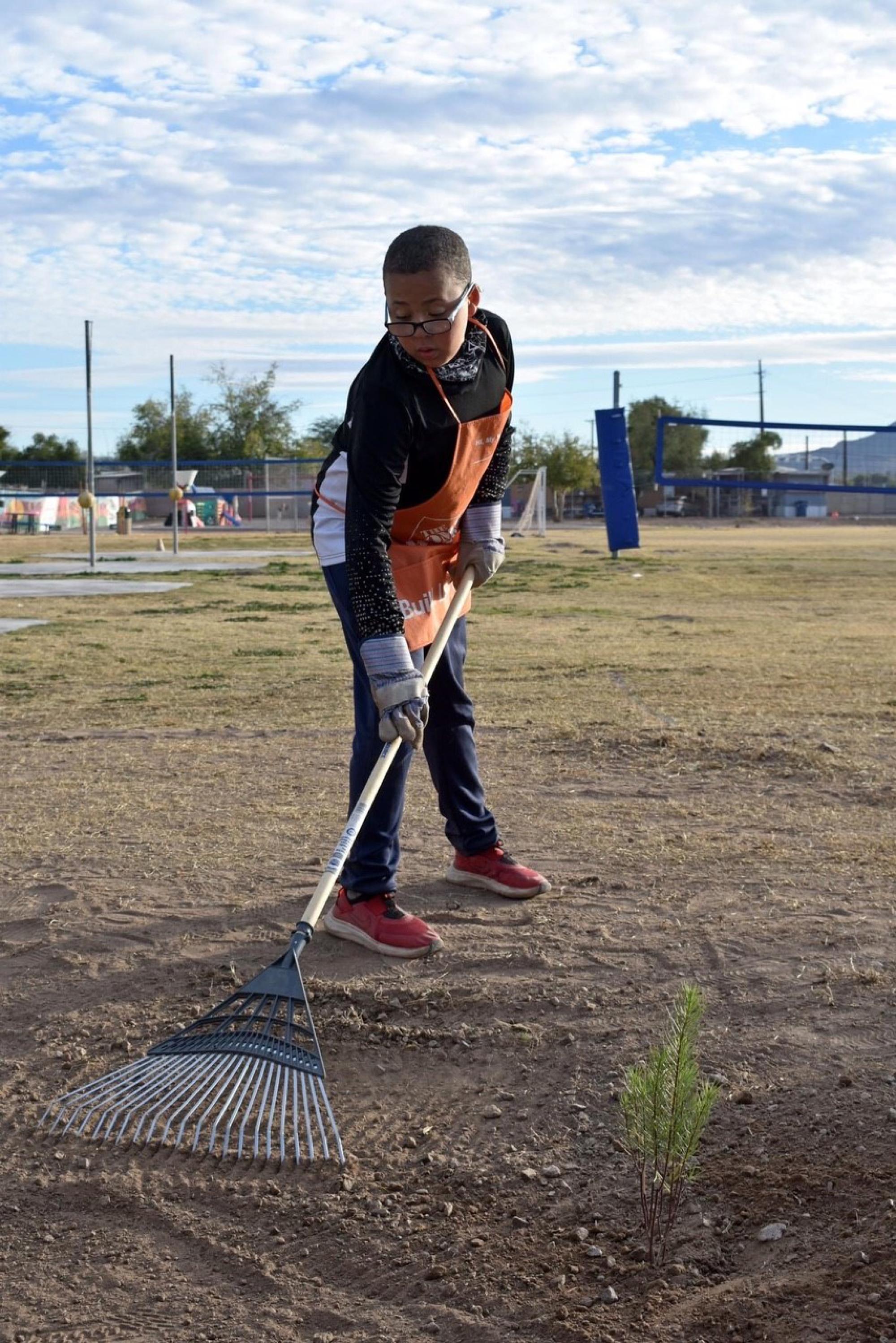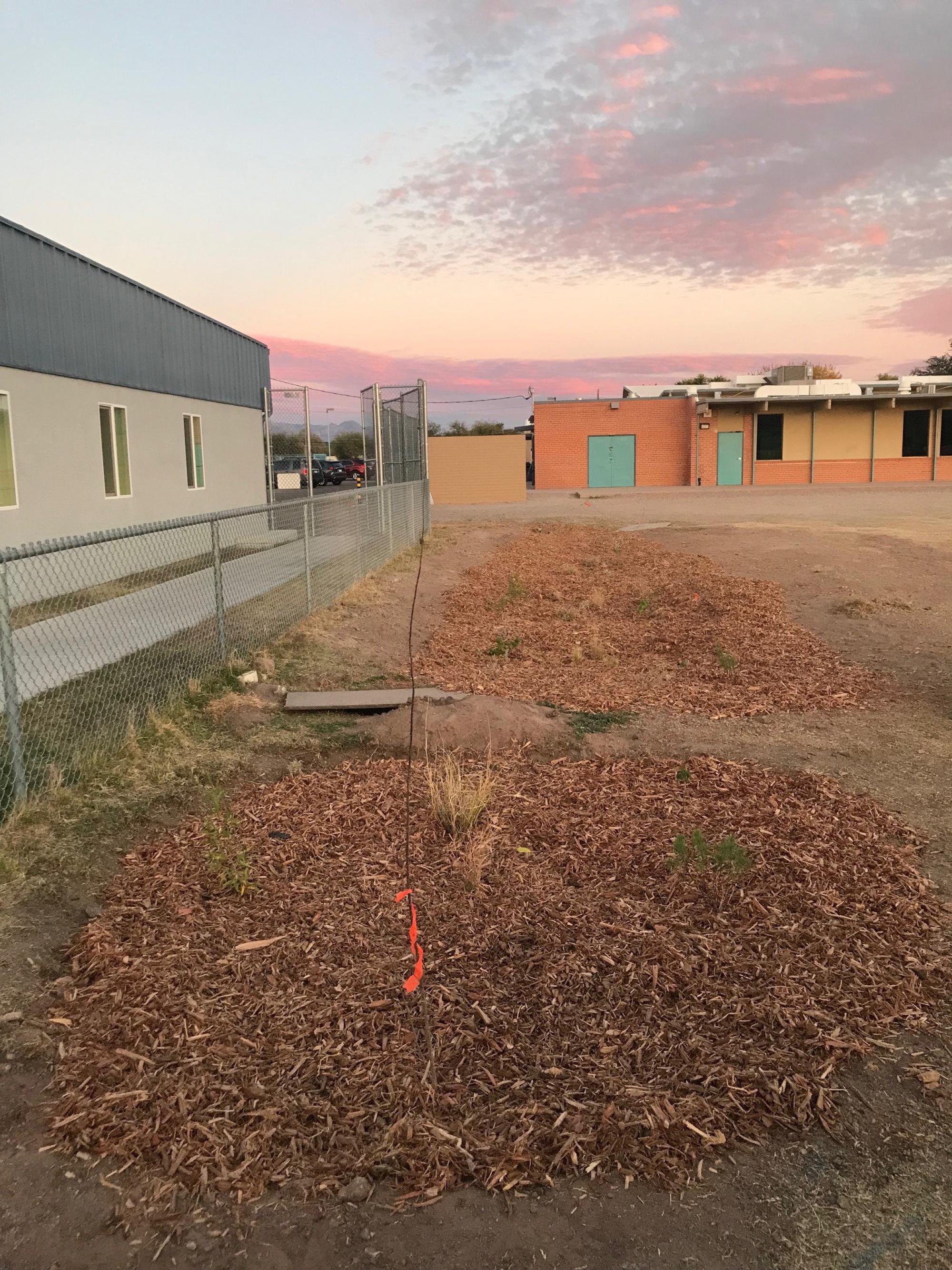Solving Problems with Rain at Laguna Elementary
Tucson Education Program
On Monday, November 28th, fifth and sixth graders from Laguna Elementary School's after school gardening class laid the final touches on their new rain garden, getting it ready for the raindrops that will transform it into a "living laboratory" for the school.
Arizona Project WET has been partnering with Watershed Management Group for several years now, installing rain gardens in over 25 schools. As a part of the program, the students also receive educational days leading up to the installation. On the first day, they investigate their schoolyard for problems of unhealthy soil and flooding, lack of habitat and biodiversity, and extreme heat. They are asked to think critically about these problems and how they are connected, and use systems thinking to discover how we can harness the rain from the sky to solve all of these problems.
On day 2, the class learns about the basics of building a rain garden. What are the parts of the system and how do they work together? Just how much rain can we collect off our roofs, sidewalks, and parking lots? And how does that inform how big our basins should be, and what plants we can support with that water? Students are introduced to what we call "Plant Superheroes," native plants that have adapted to the desert's harsh environment and work together in guilds to thrive.
The third and last educational day is dedicated to design. With what they have learned about their schoolyard and the problems it faces, students assess the space in question, looking for potential water sources and anticipating the flow of water through the landscape. With each student coming up with their own unique solutions and ideas, a plan begins to come together. Watershed Management Group takes each student's designs and combines their ideas into one final design that will soon be implemented.
Once the excavating machinery digs the basins and does the heavy lifting, the students come in to shape the edges of the basins into natural slopes and bends. They find the best location for each plant: native grasses in the bottom of the basin to break up the soil and improve infiltration; shrubs on the edge of the basins to support them against erosion; and trees outside the basins, where their roots will dig deep and become strong as they reach for the basins' water. After they carefully place the plants in the ground, wood mulch is spread around the entire garden, shielding the roots and the soil from the heat of the sun while slowly decomposing into new, healthier soil.
With their rain garden installed, their work is only beginning. Caring for the rain garden and maintaining its health will be a job for them and future students at Laguna. As it grows into the ecosystem it was designed to be, it will also become a place for students to conduct scientific experiments, draw inspiration for art and imagination, or simply enjoy a hot day in the shade. In improving this small area at their school they have also transformed the legacy of Laguna and the surrounding community, reducing the flooding that happens all across the schoolyard and working towards cooling the urban Tucson area.


